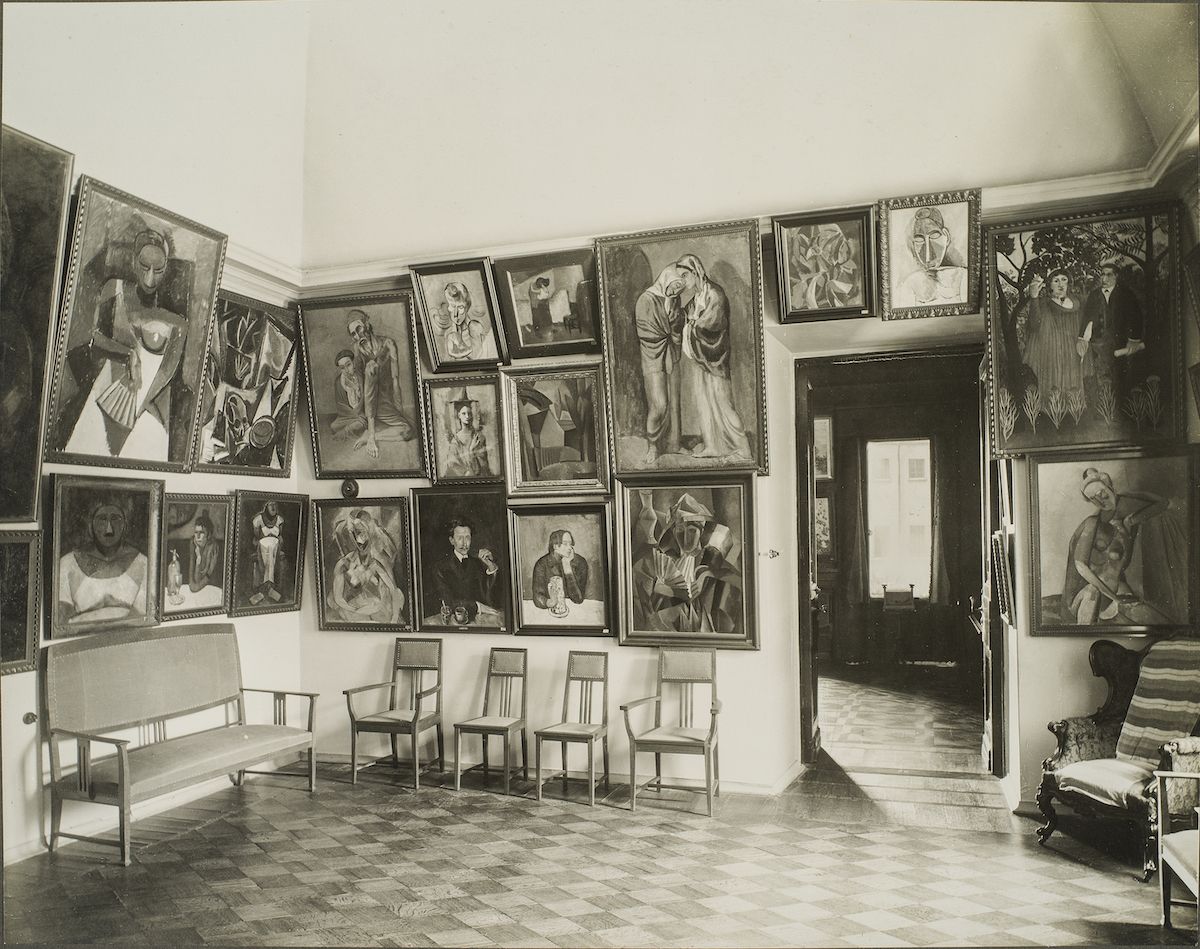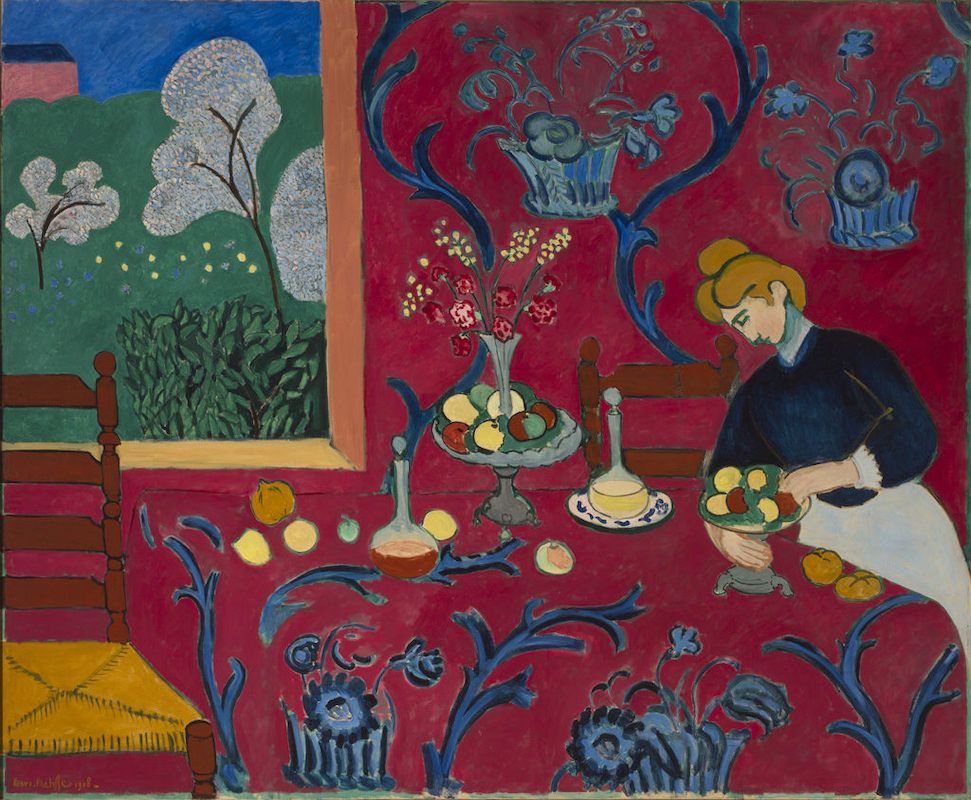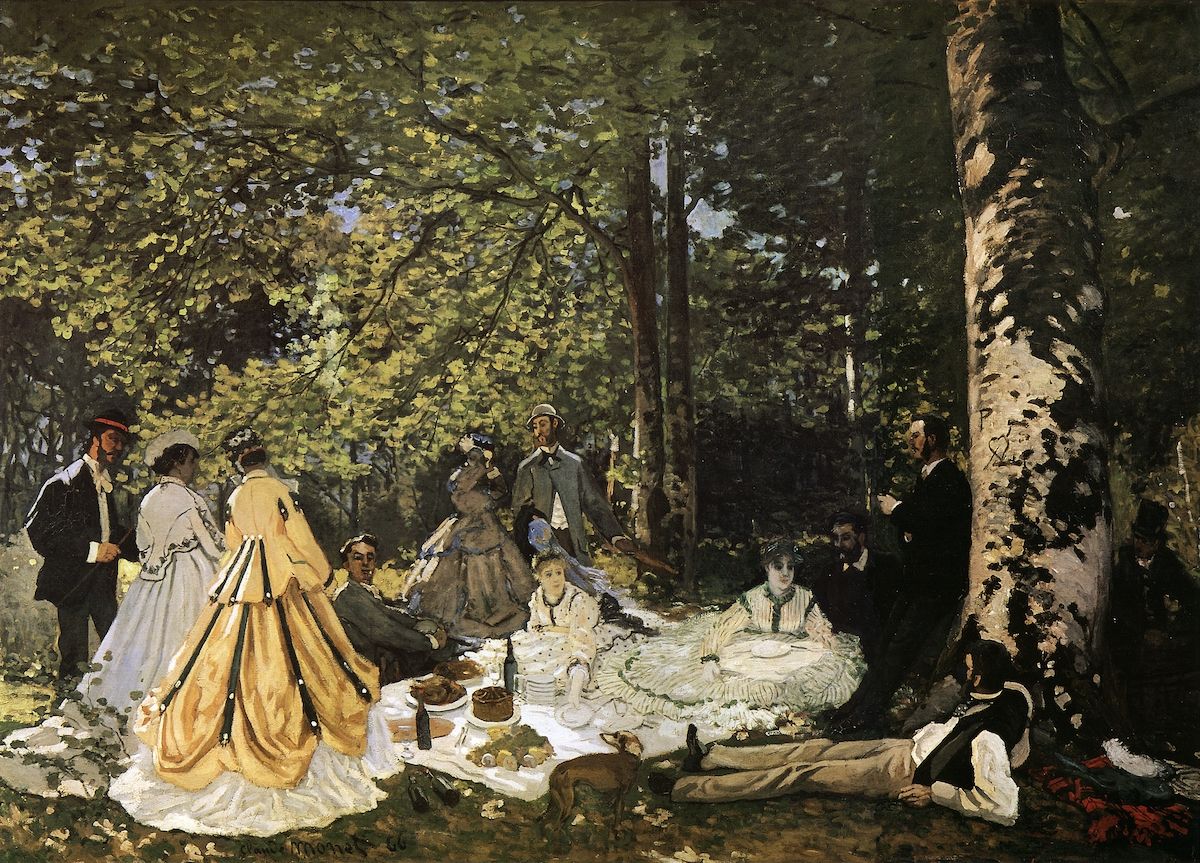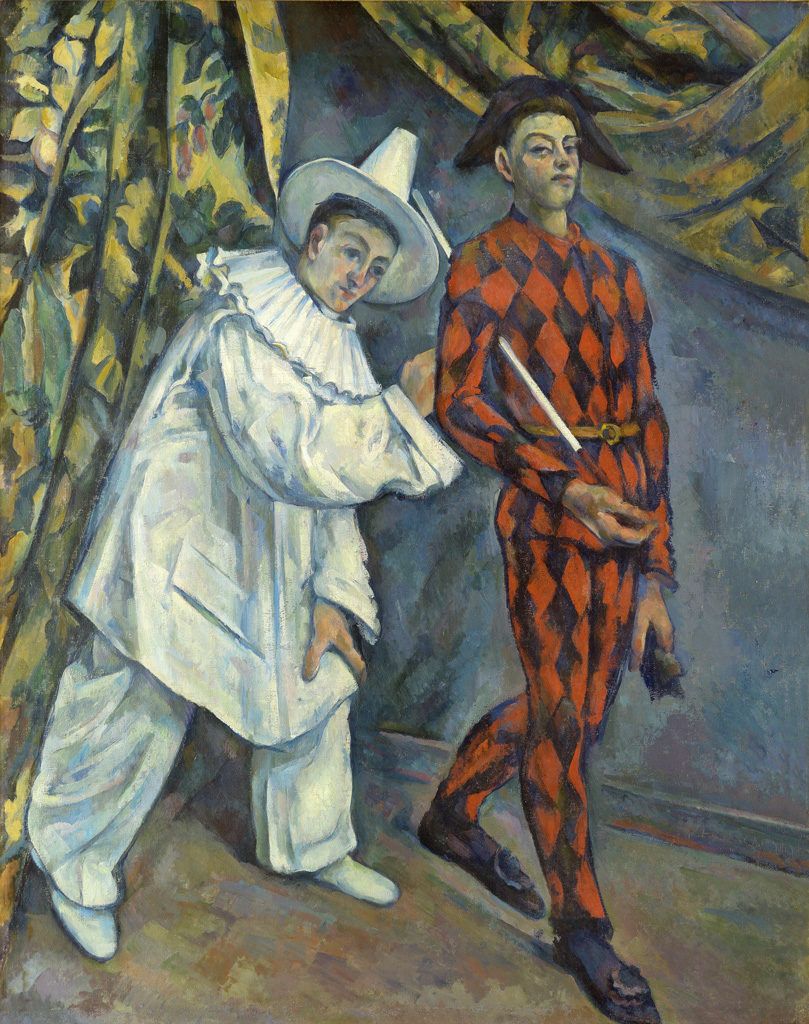
At the last minute I decided to travel to Paris to see the exhibition Icons of Modern Art: The Shchukin Collection at the Fondation Louis Vuitton. Even though I had booked a timed ticket in advance I had to queue for more than half an hour outside in the rain before I could enter the exhibition. It was well worth the wait and the trip to Paris.
The exhibition consists of some 130 pieces from the collection of the Russian textile magnate Sergei Shchukin (1854-1936). Between 1898 and 1914 Shchukin amassed one the greatest collections of French modern art, with numerous works by Monet, Cézanne, Van Gogh, Gauguin, Matisse, Picasso, Degas and Renoir. The paintings decorated the walls of his Moscow mansion, the Trubetskoy Palace (pictured above is the Picasso room), which Shchukin opened to the Russian public with the intention of nurturing Russian artistic and intellectual life. In 1917, following the Russian revolution, Shchukin fled to Paris, leaving his prized collection behind. He died in exile in 1936.
In 1918 Lenin nationalised the collection. Shchukin's former mansion became the State Museum of Modern Western Art Section I (section II being the mansion and collection of the other famous Russian art patron Ivan Morozov). In 1948 Stalin ordered the museum closed because of the "bourgeois" nature of the artworks. The collection was subsequently divided between Moscow's Pushkin Museum and the Hermitage Museum in Saint Petersburg, where the works remain to this day. The paintings are rarely seen outside Russia, partly because Shchukin's heirs sue for their return when the paintings travel abroad. This explains why the current exhibition is such a major event. It is also the first time that the paintings are brought together again.
The exhibition starts with a room with two portraits of Shchukin himself and self-portraits of the artists he collected. It is followed by a room with some of Shchukin's first purchases. These works are OK, but not great, although many museums would be all too glad to have them. And then on it goes. One room is filled with eleven Tahitian-period Gauguins, another with a dozen or so large-scale Matisses, one of the highlights of the exhibition. By this time I was already awestruck but there were still several rooms to come with works by Picasso, Braque, Cézanne, Malévitch, Rodtchenko and yes, more.



Left: Henri Matisse, Red Room (Harmony in Red), 1908; Middle: Claude Monet, Le Déjeuner sur l’herbe, 1866; Right: Paul Cézanne, Mardi gras (Pierrot et Arlequin), 1888–90.
I was delighted to finally see various works that I only knew from reproductions, - some of which I even have as a postcard -, since no reproduction can capture the depth of colour in Matisse's Red Room (Harmony in Red) (1908) or his Goldfish (1912). I also discovered many excellent works that I'd never seen before and may not see again in the foreseeable future.
Icons of Modern Art is on view through 5 March at the Fondation Louis Vuitton in Paris.